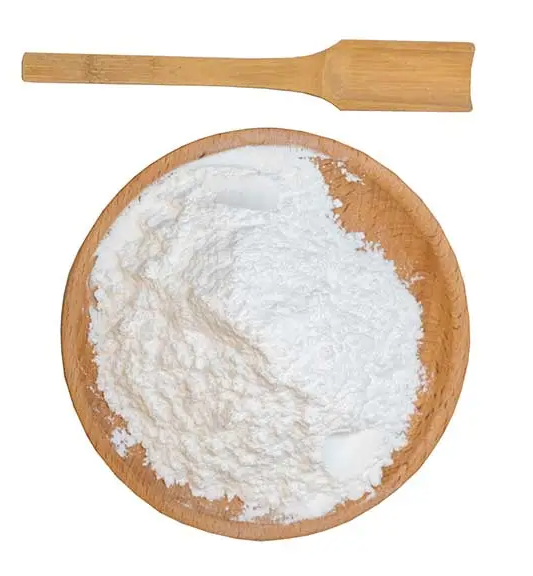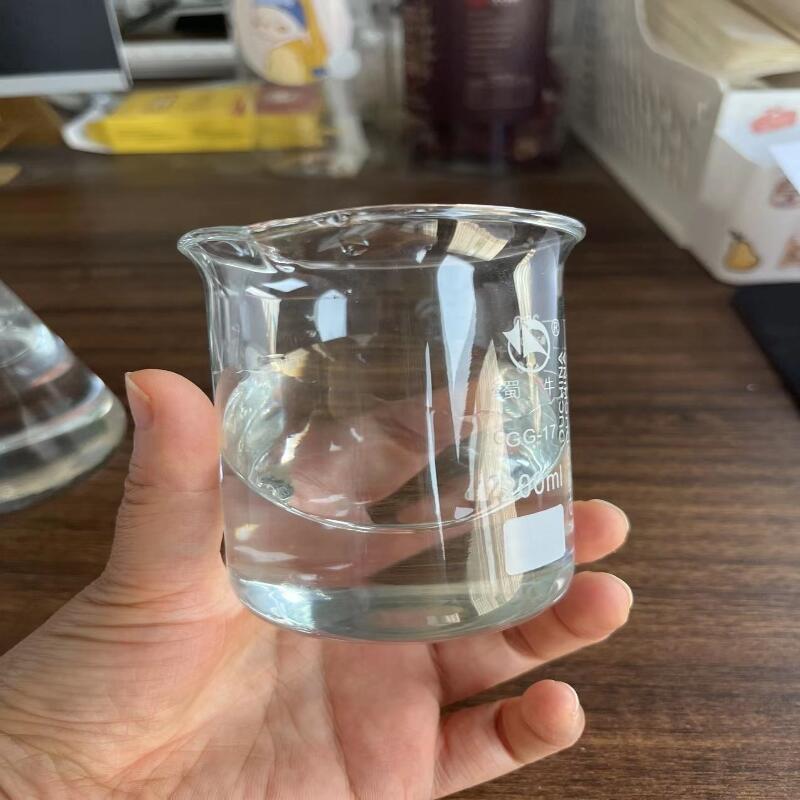Comparative analysis of different blueberry extracts by HPLC
-
Last Update: 2018-10-19
-
Source: Internet
-
Author: User
Search more information of high quality chemicals, good prices and reliable suppliers, visit
www.echemi.com
Abstract: the anthocyanins in two different blueberry extracts and fresh blueberries were compared by HPLC The results showed that anthocyanins in a blueberry extract were single, mainly cyanidin-3-o-glucoside, with anthocyanin content of 40.96%; anthocyanins in B blueberry extract were rich, with anthocyanin content of 43.15%; The anthocyanin content of fresh blueberry is 4.45mg/g Although the two samples have reached the product specifications (anthocyanin content ≥ 25%), the chromatogram of a blueberry extract is not consistent with that of fresh blueberry fruit This method can significantly compare the differences of blueberry extract from different manufacturers Key words: blueberry extract anthocyanin difference blueberry is known as "the fruit of beautiful pupil" because it is rich in anthocyanin and has good effect on protecting eyesight and relieving eye fatigue Modern pharmacological research shows that anthocyanin has the functions of anti-oxidation, anti-tumor, prevention and treatment of cardiovascular and cerebrovascular diseases, and promoting vision [1] It is widely used in the treatment of hypertensive retinopathy and other diseases in clinical, and is the main active component of ophthalmic drugs [2] Blueberry extract is a kind of dark purple powder with slightly sour taste It is made of fresh or frozen blueberry fruit by extraction At present, blueberry extract is used as medicine in Europe, and as health food in the United States and Japan There are five kinds of anthocyanins in blueberry fruits: cyanidin (CY), delphinin (DP), paeoniflorin (PN), petunianin (PT) and malvacetin (MV) They are in the form of monosaccharide (arabinose, glucose, galactose) [3], of which 3-glycoside is the most abundant in nature, while the determination of anthocyanin by HPLC is controlled by cyanidin-3-o-glucoside Most products With the improvement of people's living standards and the enhancement of vision protection awareness, blueberry extract is increasingly concerned and favored by consumers, and also attracted the attention of many manufacturers In this study, the content and kinds of anthocyanins in blueberry extract and fresh blueberry fruit from two different factories were compared by high performance liquid chromatography (HPLC) with cyanidin-3-o-glucoside as the control, which provided a strong quality basis for the selection of blueberry extract 1 Materials and methods 1.1 fresh blueberries: produced in Majiang, Guizhou Province; blueberry extract: provided by the manufacturer (No A and B respectively); cyanidin-3-o-glucoside standard (≥ 99%): Chengdu mansite Biotechnology Co., Ltd.; methanol: domestic chromatographic pure; formic acid, hydrochloric acid, etc are domestic analytical pure 1.2 instrument and equipment Agilent 1260 high performance liquid chromatograph: Agilent company; hh-2 digital display constant temperature water bath: Guohua Electric Appliance Co., Ltd.; ab 204-n electronic balance: METTLER TOLEDO company; 320ph meter: metermetter Toledo company; ultrasonic cleaner: Nanchang kechangda ultra sonic equipment factory; centrifuge: Changsha Xiangzhi centrifuge instrument Co., Ltd; Ultra pure water instrument: Heal force development Ltd 1.3 preparation of test solution 1.3.1 preparation of blueberry test solution accurately weigh 6.1924g of fresh blueberry, grind it, add 50ml of 2% hydrochloric acid methanol solution (V / V), extract it at room temperature for 1h, centrifugate it for 15min at 4000R / min, add 2% hydrochloric acid methanol solution (V / V) to 100ml, filter it with 0.45 μ m membrane to obtain blueberry sample 1.3.2 preparation of blueberry extract test solution take 10.0mg each of the two extract samples accurately, add 3% formic acid aqueous solution (V / V) to a constant volume of 10ml, and filter with 0.45 μ M filter membrane to obtain blueberry extract samples 1.3.3 preparation of standard solution take the standard of cyanidin-3-o-glucoside, weigh accurately, add 2% hydrochloric acid methanol solution (V / V) to make the standard solution with the concentration of 0.049mg/ml, and filter it with 0.45 μ M filter membrane to obtain the standard sample 1.4 chromatographic conditions: diamonsil C18 5 μ m 250 × 4.6mm; detection wavelength: 525nm; flow rate: 1.0ml/min; column temperature: 30 ℃; injection volume: 10 μ L; gradient conditions are shown in Table 1 2 results and analysis 2.1 results of the determination of cyanidin-3-o-glucoside standard (see Figure 1) 2.2 results of the determination of blueberry extract samples a, B and blueberry (see Figure 2, figure 3 and Figure 4) It can be seen from Figure 2, figure 3 and Figure 4 that the anthocyanin type of sample a is single, similar to the atlas of Figure 1 standard, the peak area of cyanidin is obviously large, so that other small peak areas can be ignored; The anthocyanins of sample B are relatively abundant, including the peaks of cyanidin The anthocyanin map of natural blueberry fruit is composed of several peaks, among which cyanidin is only a part 2.3 the anthocyanin types and content comparison of blueberry, sample a and sample B (see Figure 5 and table 2) table 2 shows that the anthocyanin content is calculated according to the total peak area, and the total peak area of sample a mainly comes from cyanidin Although the content of 40.96% has reached the so-called specification (anthocyanin ≥ 25%), the source is not true The anthocyanin content of sample B is the sum of several peak areas, which also reaches the product specification The anthocyanin content of blueberry fruit is 0.445%, i.e 4.45mg/g, which is consistent with the content range of anthocyanin in general blueberry fruit [4-8] The results of Figure 5 show that the anthocyanins of sample a are single compared with those of natural and fresh blueberries, and the anthocyanins of sample B are the same as those of fresh blueberries As the anthocyanin type of sample a only has a big peak of cyanidin, it does not conform to the characteristics of natural blueberry extract, so it is not recommended to purchase and use Conclusion blueberry extract is widely used in food, medicine, cosmetics and health products, and has great market potential Because of its high added value and huge profit margin, many enterprises are producing and selling blueberry extract Its safety and authenticity have become the focus of people and related enterprises This study provides research ideas and methods for the identification of blueberry extract The HPLC method is more accurate and efficient, but the analysis method needs to be further optimized and improved References: [1] Liu Xueming, Liao Sentai, Xiao Gengsheng, et al Research progress of anthocyanin absorption and metabolism [J] Chinese herbal medicine, 2007, 38 (6): 953-956 [2] Liu Chunmin, Wang Kangmei, Zou Ling Effect of anthocyanin on visual fatigue and vision of Myopic Adolescents [J] Chinese Journal of Practical Ophthalmology, 2005, 23 (6): 607-609 [3] Alejandro Purification and identification of Capulinanthocyanins [J] Food chemistry, 1999, 65:201-206 [4] Tian miyia, Li Yadong, Hu Wenzhong, etc A Comparative Study on the content and antioxidant activity of 60 kinds of blueberry anthocyanins [J] Food research and development, 2014, 35 (21): 1-5 [5] Wang Zhaoyu, Xu Meiling, Zhu Beiwei Extraction conditions of blueberry anthocyanins [J] Journal of Dalian Institute of light industry, 2007, 26 (3): 196-198 [6] Li Luning, Chen Wei, Zhao Liyi, et al Acylation and antioxidant evaluation of blueberry anthocyanins [J] food industry science and technology 2016.35 (6): 102-106 [7] Sun Qianyi, Lu Baojun, Zhang Jing Research progress of blueberry anthocyanins [J] food industry science and technology 2016.20 (37): 381-390 [8] Yan Hongguang, Zhang Wenhua, Ding Zhien Research on stability of rabbit eye blueberry anthocyanins [J] food industry science and technology 2013.13 (34): 119-123
This article is an English version of an article which is originally in the Chinese language on echemi.com and is provided for information purposes only.
This website makes no representation or warranty of any kind, either expressed or implied, as to the accuracy, completeness ownership or reliability of
the article or any translations thereof. If you have any concerns or complaints relating to the article, please send an email, providing a detailed
description of the concern or complaint, to
service@echemi.com. A staff member will contact you within 5 working days. Once verified, infringing content
will be removed immediately.






